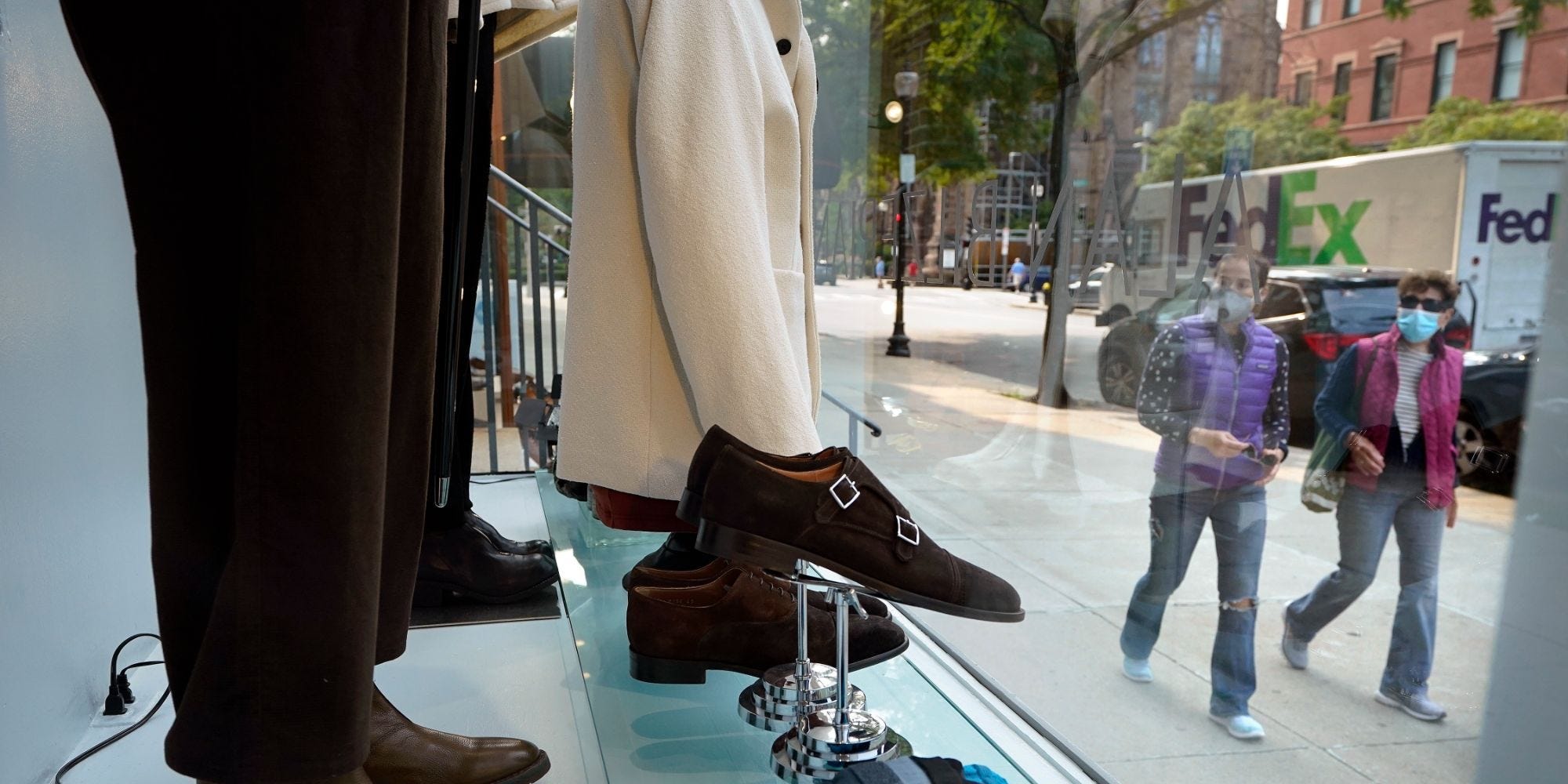
Steven Senne, File via AP
- Expectations for one-year and three-year inflation rose to 7-year highs in a Fed survey.
- Inflation expectations are a key indicator for price growth and are closely watched by economists.
- The data underscore forecasts of reopening and stimulus driving a spending boom throughout 2021.
- See more stories on Insider's business page.
Americans grew more concerned about rising prices in March as vaccination accelerated and the economy slowly reopened.
The median expectation for one-year inflation climbed to 3.2% from 3.1% last month, according to a survey conducted by the Federal Reserve Bank of New York. The estimate for three-year inflation crept to 3.1% from 3%. Both expectations now sit at their highest levels since mid-2014, signaling Americans are gearing up for the recovery to drive a sharp rise in prices.
Within the gauge, expectations for gas and rent inflation rose to record highs of 9.9% and 9.3%, respectively. The median estimates for medical care and college tuition inflation declined slightly. Median year-ahead expectations for home prices rose to record 4.8% growth from 4%, underscoring the supply-demand imbalance roiling the US housing market.
On one hand, inflation expectations are just that: expectations. They are subject to change and have overshot real inflation for much of the past decade.
Yet fears of stronger inflation are a somewhat self-fulfilling prophecy. Businesses tend to lift prices and workers demand higher wages when the country sees stronger inflation on the horizon. The dynamic makes inflation expectations a key forward-looking indicator for price growth.
The March readings mirror commentary from the Fed, Wall Street, and policymakers as the country nears the end of the COVID-19 pandemic. Reopening from harsh lockdowns is expected to revive spending after months of weaker activity. Stimulus passed throughout the pandemic also left Americans with massive savings set to be at least partially deployed as the US enters a new normal.
Some economists have raised concerns over the forecasted bounce in inflation, saying Democrats' $1.9 trillion stimulus plan passed in March risks runaway price growth and a new financial crisis. Others, including Fed Chair Jerome Powell, are less worried. They note that inflation consistently undershot the Fed's 2% target for decades, and those downward pressures should drag price growth back toward 2% after its temporary jump.
"It is more likely that what happens in the next year or so is going to amount to prices moving up, but not staying up. And certainly not staying up to the point where they would move inflation expectations above 2%," Powell said in March, adding the Fed will "be patient" in waiting for inflation to drive a pullback for its accommodative monetary policy.
Members of the Biden administration's Council of Economic Advisors made similar claims in a Monday blog post. Pent-up demand and supply-chain disruptions will lift inflation, but signals from the bond market show investors preparing for a transitory increase. Long-term price growth will likely fade to the Fed's target as actual inflation lands in line with more modest expectations, economists Jared Bernstein and Ernie Tedeschi said.
"An increase in inflation expectations from an abnormally low level is a welcome development. But inflation expectations must be carefully monitored to distinguish between the hotter but sustainable scenario versus true overheating," they added.
